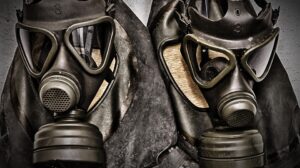Illustrating Life: The Importance of Respiratory System Diagrams in Education
Introduction
The respiratory system is fundamental to human life, facilitating the vital process of gas exchange. Understanding its structure and function is essential for students and healthcare professionals alike. In recent years, the use of illustrations and diagrams in education has gained prominence for enhancing comprehension and retention of complex biological concepts. This article explores the importance of respiratory system diagrams, their educational applications, and their role in fostering a deeper understanding of respiratory health.
The Anatomy of the Respiratory System
Structure and Function
The respiratory system comprises several key components: the nasal cavity, pharynx, larynx, trachea, bronchi, bronchioles, and lungs. Each element serves a specific function in the process of breathing, gas exchange, and the regulation of pH levels in the body.
- Nasal Cavity: Filters, warms, and humidifies the air.
- Pharynx: Connects the nasal cavity to the larynx and esophagus, serving both respiratory and digestive functions.
- Larynx: Houses the vocal cords and plays a role in sound production while protecting the trachea against food aspiration.
- Trachea: The windpipe that conducts air to and from the lungs.
- Bronchi and Bronchioles: Branch into smaller passages and terminate in alveoli, where gas exchange occurs.
- Lungs: The primary organs of respiration, consisting of millions of alveoli that facilitate oxygen and carbon dioxide exchange.
Diagrams can visually elucidate this anatomy, helping students appreciate spatial relationships and functional interdependencies within the system.
Illustrative Techniques in Education
The effectiveness of illustrations in teaching complex subjects stems from various techniques:
- Labeling: Clear labels on anatomical diagrams help students identify structures and understand their functions.
- Color Coding: Differentiating parts of the respiratory system using color can enhance memory retention and recognition.
- 3D Models: Interactive 3D diagrams allow students to visualize structures from multiple angles, solidifying their understanding.
The Role of Diagrams in Comprehension
Visual Learning
Research shows that individuals have different learning styles, with visual learners benefiting significantly from graphical representations. Diagrams fulfill the needs of these learners by:
- Simplifying Complex Information: Breaking down intricate systems into identifiable parts aids in memory retention and understanding.
- Facilitating Connections: Visual aids can highlight the relationships between structures, fostering a more integrated understanding of the respiratory process.
Enhancing Engagement
The incorporation of diagrams into educational materials increases student engagement. When learners interact with visual elements, their motivation and interest can lead to improved educational outcomes. According to studies, students are more likely to retain information when it is presented in combination with visuals.
Facilitating Retention
Visual representations aid in the long-term retention of information. Studies indicate that learners retain information better when it is associated with images or diagrams. The mental images created by viewing diagrams significantly enhance recall during assessments or real-world applications.
Practical Applications of Respiratory System Diagrams
In School Settings
K-12 Education
At the K-12 level, teachers often utilize respiratory system diagrams to introduce basic concepts of biology. Structural diagrams can be accompanied by labeling activities, foster collaboration through group projects, or utilized as part of interactive lessons. Such approaches engage students and help solidify their understanding of the material.
Higher Education
In college and university settings, diagrams are crucial for courses in biology, health sciences, and medicine. Advanced models depicting gas exchange mechanics, pulmonary physiology, and the impact of diseases on respiratory function are essential in conveying complex information to future healthcare professionals.
In Clinical Education
Respiratory system diagrams play a critical role in clinical education. Healthcare professionals, including nurses and respiratory therapists, utilize diagrams to:
- Educate Patients: Visual aids can help explain diagnoses, treatments, and understanding symptoms.
- Train New Professionals: Illustrations serve as a fundamental component in developing curriculum for training programs in respiratory care.
In Health Promotion
Diagrams are also valuable tools in public health education. They can effectively illustrate the effects of smoking, pollutants, and other environmental factors on the respiratory system, increasing awareness around respiratory health prevention measures.
Case Studies
High School Biology Curriculum
In a high school setting, a study was conducted to assess the impact of using respiratory system diagrams in the biology curriculum. The students who received instruction supplemented with diagrams showed improved performance in both understanding key concepts and retention during examinations compared to those who were taught using text alone.
Medical School Training
A medical school utilized detailed anatomical diagrams and interactive models of the respiratory system in their anatomy courses. Students reported a higher level of confidence in their ability to describe the structure and function of the respiratory system, indicating that the use of visual aids significantly enhanced their learning experience.
Challenges and Limitations
While diagrams are invaluable, they also come with challenges:
- Misinterpretation: Students may misinterpret diagrams if they lack proper guidance or adequate background knowledge.
- Simplicity vs. Complexity: Striking a balance between detailed representations and overly simplified diagrams can be challenging. Diagrams must convey essential information without overwhelming the viewer.
Conclusion
In conclusion, respiratory system diagrams are essential tools in education, fostering understanding and engagement among students at all levels. By simplifying complex information, facilitating connections, enhancing retention, and promoting patient education, diagrams play a vital role in the learning process. As educational methodologies continue to evolve, the integration of visual aids will remain a fundamental aspect of effectively teaching the intricacies of the respiratory system.
Incorporating diagrams into curricula not only benefits learners but also enhances the overall effectiveness of education in biology, health sciences, and public health. Future research and innovations in visualization techniques will continue to enrich the educational landscape, ensuring that concepts related to the respiratory system are conveyed clearly and effectively.
This article provides a comprehensive overview of the importance of respiratory system diagrams in education. For a more detailed exploration of specific aspects or to delve deeper into case studies, feel free to request additional sections or information.


























Add Comment